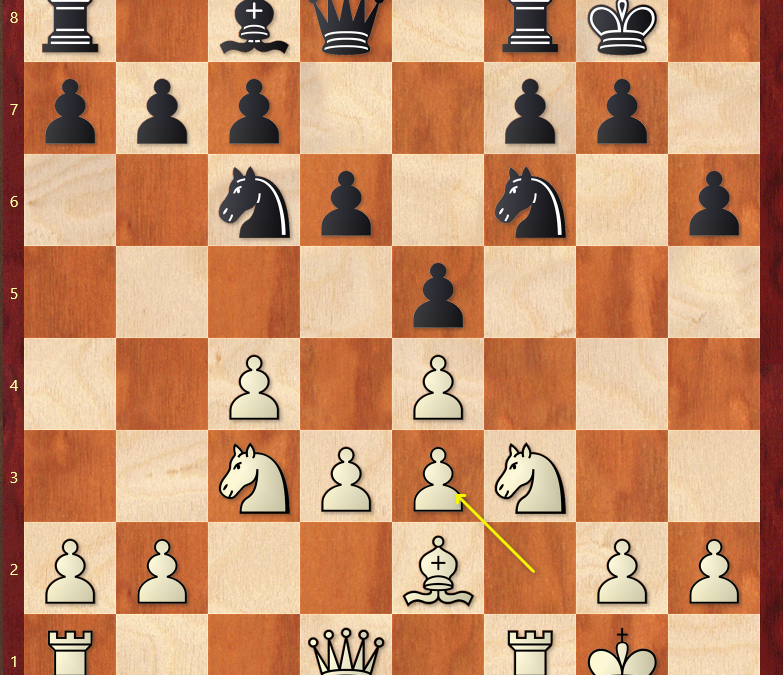Doubled Pawns: Heroes or Villains?
Doubled pawns are often regarded negatively as something to be avoided. Their mobility is inherently limited: the second pawn cannot advance until the lead pawn takes a step forward first. However, there is more to these little soldiers than first meets the eye. Below, we explore the strength of doubled pawns.
Why should white love their doubled e pawns?
The Strength of Doubled Pawns
Doubled pawns can provide two important advantages:
- Open files
- Control over important squares
Open files
The creation of doubled pawns will always provide their army with an open file, which could be very useful.
In the following game from Ostend 1905, the doubled g pawns provide white with an open h file, which the Polish master Dawid Janowski used to target the isolated h7 pawn.
The following game shows the doubled g4 and g5 pawns giving white a clear road which Leonhardt can use to attack the black king down the open h file.
At St Petersburg 1914, the famous player and author Aron Nimzowitsch demonstrated the power of using the open b file, provided by the doubled c pawns, to target black’s weak b7 pawn.
Control of important squares
Doubled pawns may also prove useful by controlling important squares. This can create outposts for your own pieces and restrict your opponent’s pieces.
A good example of this was provided by the Austrian master Carl Schlechter at Ostend 1905.
At that same tournament, the Austrian master Heinrich Wolf used his doubled c pawns to take control over the d4 square, kicking the white knight out of the centre.
In the following game, white’s doubled e pawns control the important f4 and f5 squares.
Overcoming the Weakness of Doubled Pawns
Mobility
The main disadvantage of doubled pawns is their lack of mobility, as the lead pawn must advance before the other can follow. When mobility is not a problem, their dynamic energy can be a strength of doubled pawns.
At Dresden 1892, the German master Siegbert Tarrasch demonstrated the power of mobile doubled pawns.
Doubled vs doubled isolated pawns
Doubled pawns are only weak if they cannot be defended by another pawn, and if the opponent can attack them. Usually, this is not a problem, as doubled pawns are often part of a greater compact pawn mass, where the pawns defend each other. However, doubled isolated pawns are usually a different story.
At Carlsbad 1907, the Hungarian master Geza Maroczy gave the chess world a clear example of this difference.
The lesson is clear: doubled pawns are not always problems to be avoided! Rather, they should be judged on their own merits in any position: do the squares they control and the open files they provide outweigh their cons?
For more resources to improve your game, remember to join the Elite Chess group at chesstribe.com!


Recent Comments